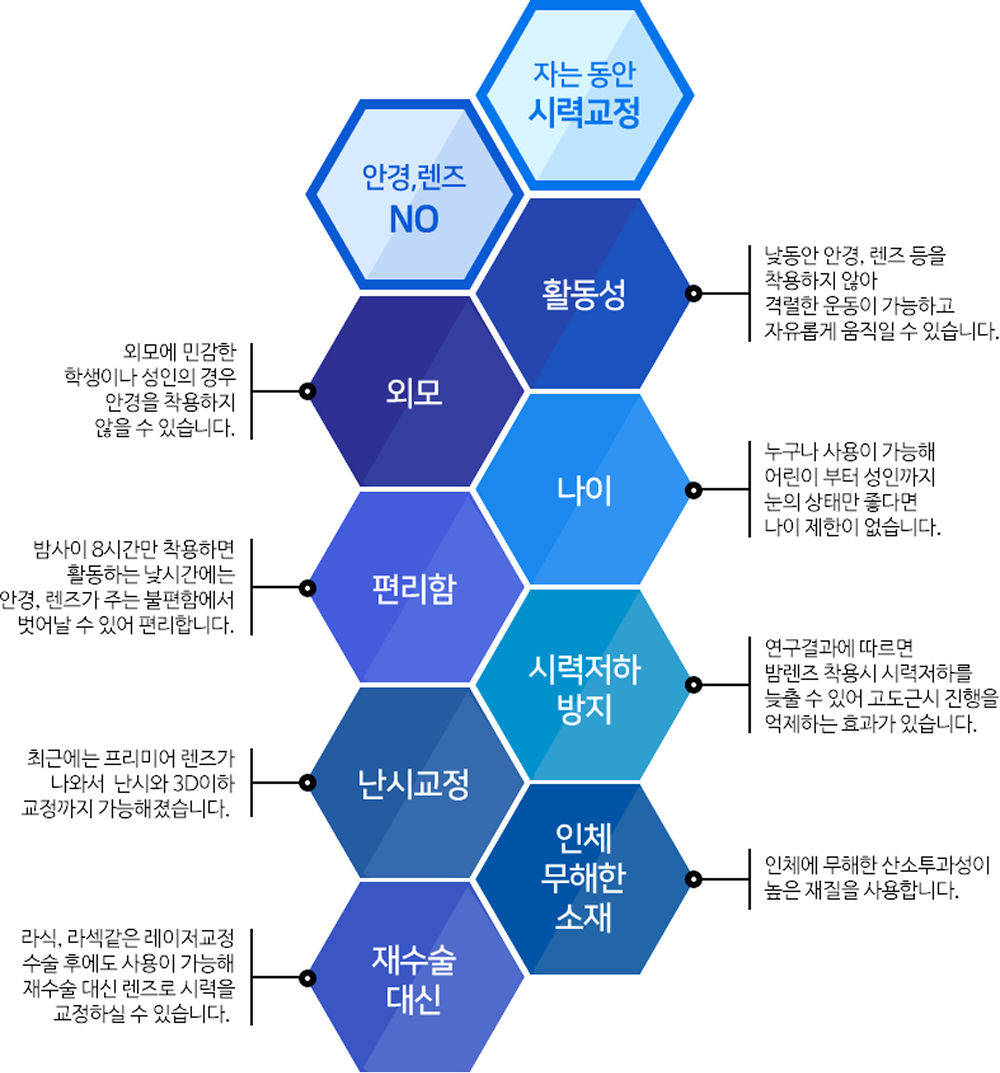-

-
What is Dream Secret Night Lenses?
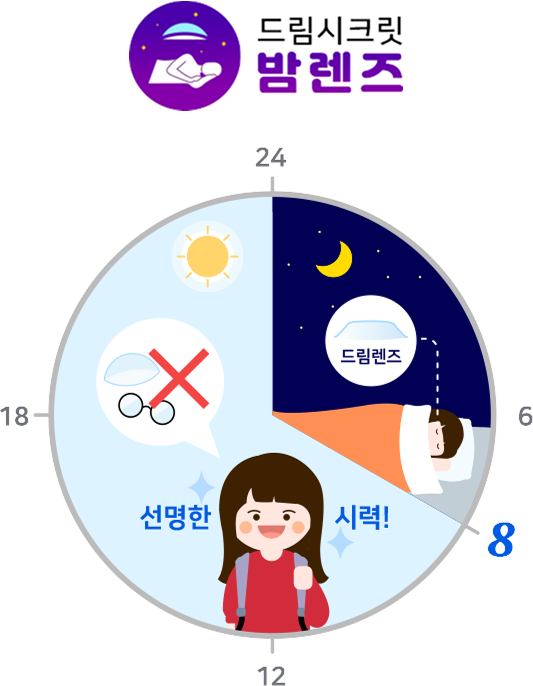
Dream Secret Night Lenses are lenses that temporarily reshape the cornea, correcting myopia and astigmatism during sleep. Allowing to enjoy clear vision throughout the day without glasses or contact lenses. The cornea will return to its original shape therefore does not harm eye health even for lasik and lasek surgery. It has been proven that night lenses at a young age can slow the progression of myopia, making it a highly preferred method among parents.
Principle of Vision Correction
-
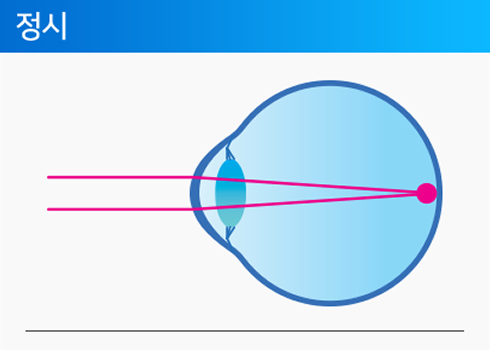
Focused on the retina, clear vision.
-
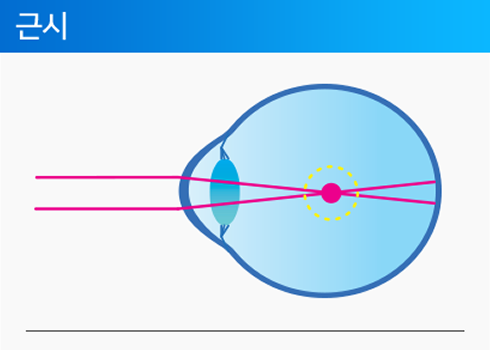
Focused in front of the retina, causing blurry vision.
-
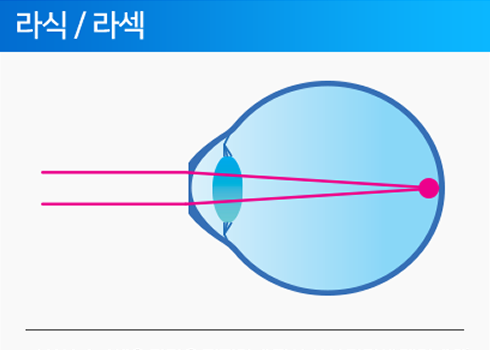
Surgery flattens the cornea so that focused correctly on the retina.
-
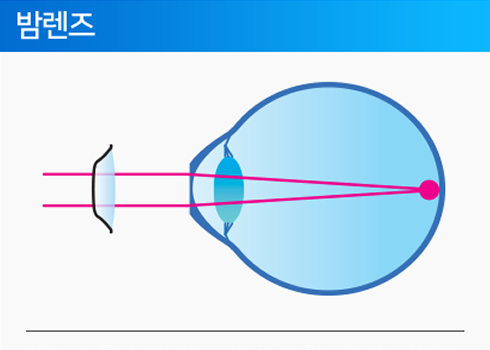
Night lenses temporarily reshape the cornea without surgery, allowing clear vision during the day.
How Do Dream Secret Night Lenses Work?
-
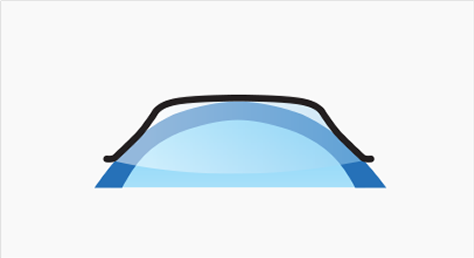
1
As sleeping, the lens make the center of the cornea flat.
-
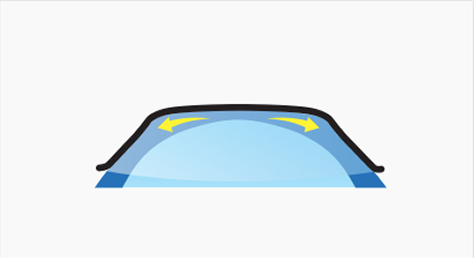
2
While sleeping, the corneal epithelial cells are restructured.
-
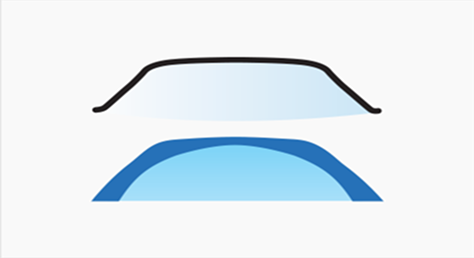
3
By morning, the cornea has been flattened, and the lenses are removed.
-
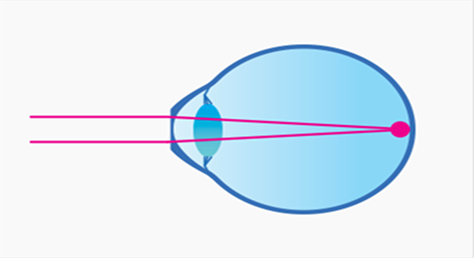
4
Light is correctly focused on the retina, resulting in clear daytime vision without glasses.
Advantages of Night Lenses
-
-

-
Recommended for These Individuals
-
Myopia Progression Children and Adolescents
For growing children and teens whose eyesight is worsening over time and can help slow myopia progression without surgery.
-
Active Adolescents and Concern About Appearance Children and Adolescent
Students who are physically active and find glasses inconvenient or unsafe during sports or outdoor activities, night lenses provide a safer, more comfortable alternative.
-
Worry About Refractive Surgery Adults
Those who are hesitant of surgical procedures like Lasik or Lasek, night lenses offer a non surgery option for clear daytime vision.
-
Experiencing Regression After Surgery Concerning About 2nd Surgery
Individuals who regressed after lasik or Lasek surgery, offer clear vision without surgery.
-
Without Cataract Early Stage Presbyopia
No sign of cataract and presbyopia in over 40’s night lenses can provide support to maintain comfortable, clear vision.
Not Good Candidates
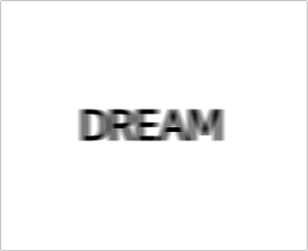
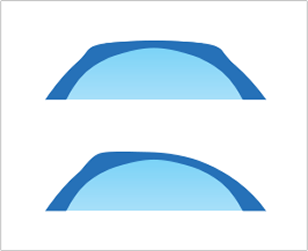

-

Young age who cannot cooperate
-

High myopia and astigmatism
-

Very small cornea (surface)
-

Exceptionally small eyes
-

Limited vision correction results after a trial test.
-

-
Is it safe to sleep with night lenses?

Dream Lenses are made with highly oxygen-permeable materials that allow your eyes to breathe comfortably throughout the night. Lenses are safe to sleep with and eye no harm in the eyes.
Is there a limited to have vision correction surgery later if I wear night lenses now?
The corneal epithelium regrows very quickly. In the case of lasik surgery, the corneal surface is reshaped, and within 3 to 4 days, most of the cells recover. The cornea naturally restores itself once night lens use is stopped. With a short adjustment period of 1 to 3 months, those who considering lasik can receive surgery without concern. Dream lenses correct the vision gently without causing permanent changes.

Is it normal to feel discomfort at first?

Yes, it is common to experience a foreign body sensation and discomfort at first. But most people adapt over time as the lenses settle in place. The adjustment period varies by individual, but most people adapt within 1 to 3 weeks, and rarely feel discomfort after one month.
My vision is still blurry. Is that normal?
Most patients achieve good vision, but in cases with high astigmatism or flat corneas can lead to blurred vision at first. With personalized adjustments or lens changes can achieve sharp vision

Are all night lenses the same all places?
Not all lenses are the same. Clear vision depends on accurate examination like cornea shape, lens selection, and detailed fitting according to individual eye condition. Important factor is accurate testing, lens selection, and fitting make a significant difference in outcomes.


-
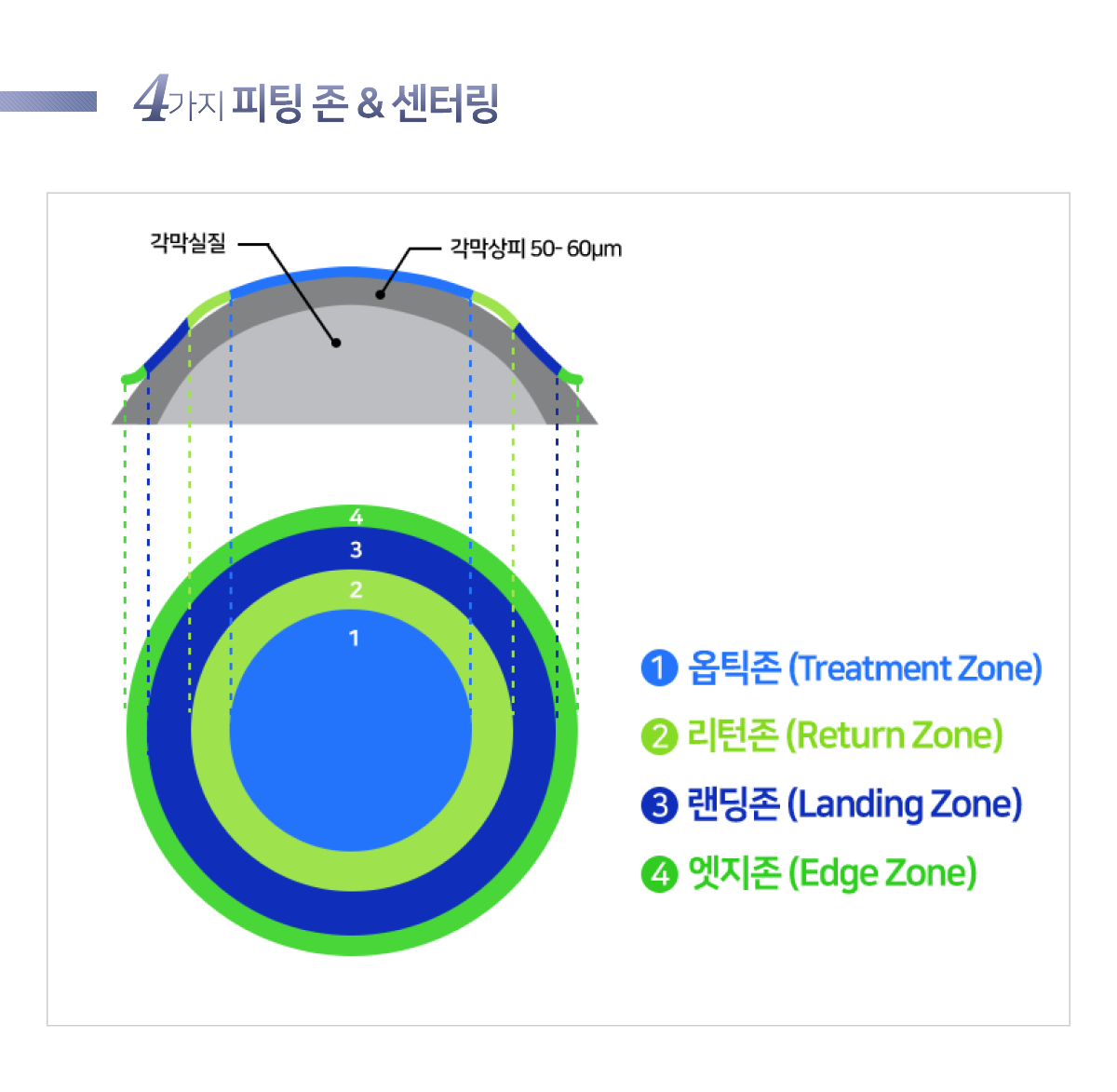
-

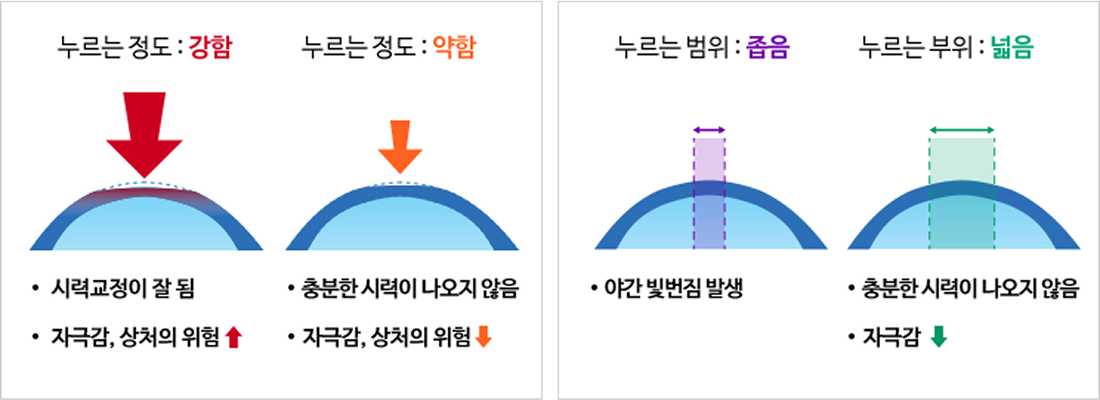
The width, depth, and center of the optic zone control the precision of vision correction and overall comfort. If the pressure e is too strong, the corneal curvature becomes flatter, leading to better vision correction but also a higher risk of corneal damage.If the pressure is too weak, the cornea is less reshaped, and sufficient vision correction may not be achieved. When the optic zone is too narrow, night glare or halos can occur. If it is too wide, although halos are reduced, the corrective effect may weaken slightly because the force is spread over a broader area.
What is ECC (Eccentricity)?
ECC refers to how evenly the corneal surface flattens outward from the center. It indicates the degree of flattening in the surrounding cornea. For Korean patients, the average corneal ECC value is around 0.5. Dream Secret lenses consider this factor carefully to achieve optimal fitting and minimize discomfort during lens wear.
 Dream predicts and adjusts the width, depth, and centration of the optic zone based
on the patient’s current vision, corneal shape, and lens usage habits. Additionally,
Dream selects the best optic cover from among more than 30 options available per lens brand.
Dream predicts and adjusts the width, depth, and centration of the optic zone based
on the patient’s current vision, corneal shape, and lens usage habits. Additionally,
Dream selects the best optic cover from among more than 30 options available per lens brand.


In the Return Zone, corneal epithelial cells moves from the center toward the mid-peripheral zone during vision correction. For optimal movement, there must be sufficient space at the mid-periphery for the cells to shift properly. This space is defined by the depth of the Return Zone (RZD).
 Dream carefully adjusts how far the Return Zone should be from the center,
how wide it should be, and at what angle, depending on each eye’s specific condition.
This detailed customization allows for effective reshaping and better vision correction.
Dream carefully adjusts how far the Return Zone should be from the center,
how wide it should be, and at what angle, depending on each eye’s specific condition.
This detailed customization allows for effective reshaping and better vision correction.

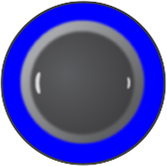
The landing zone is the area where the inner side of the lens precisely meets the outer surface of the cornea. When the landing zone is properly fitted to match the corneal shape, the lens moves together with the eye without slipping, allowing the user to feel stable centration. The position, size, angle, and width of the landing zone are crucial for achieving accurate centration. If centration fails, glare and halos may occur, and vision correction will not be successful.
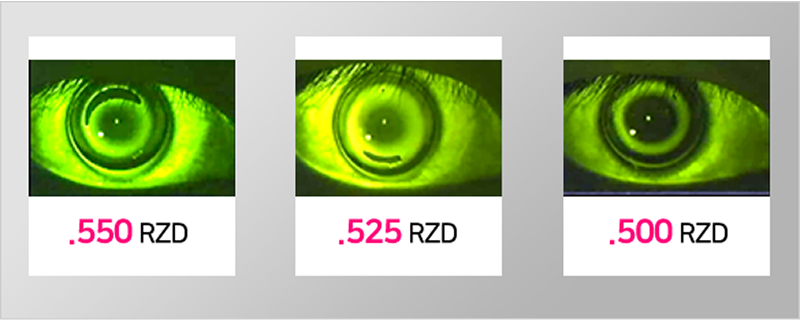
 Dream carefully adjusts the landing zone’s position, size, angle,
and width to ensure precise vision correction without inducing glare or halos.
Dream carefully adjusts the landing zone’s position, size, angle,
and width to ensure precise vision correction without inducing glare or halos.

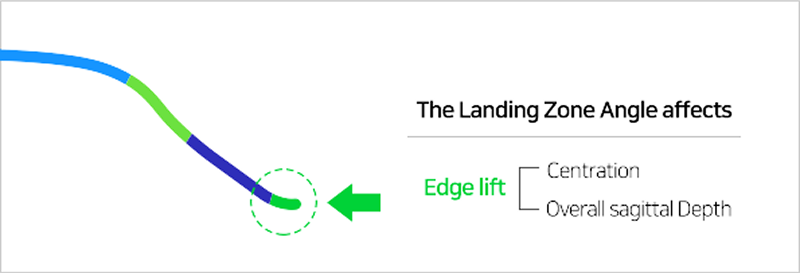
The edge refers to the very outermost portion of the lens, known as the peripheral area. Through the edge, tear circulation and oxygen exchange occur, which are critical for maintaining corneal health. If the edge space is insufficient, tears do not circulate properly and enough oxygen is not supplied, causing discomfort, tightness, and dryness in the eyes.
 Dream carefully designs the edge zone to ensure sufficient tear
and oxyge, creating a comfortable and healthy lens-wearing experience.
Dream carefully designs the edge zone to ensure sufficient tear
and oxyge, creating a comfortable and healthy lens-wearing experience.

To achieve effective vision correction with Dream Lenses, the cornea must be flattened precisely and uniformly around the visual center. If this alignment shifts away from the center, glare and halos may occur. If centering is not properly achieved, the desired correction cannot be obtained, and the cornea will not reshape as intended. This is why centering is considered one of the most critical aspects of Dream Lens fitting.
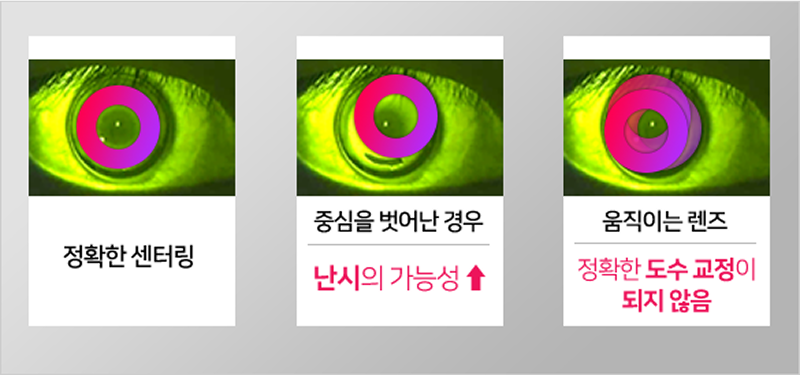
 Dream accurately checks centration through slit-lamp examinations
to ensure halos do not occur and the desired vision outcomes are achieved.
Dream accurately checks centration through slit-lamp examinations
to ensure halos do not occur and the desired vision outcomes are achieved.
-

Growing children and adolescents, in particular, require especially
precise correction and fitting. If precision is lacking, not only can
discomfort occur, but new halos or visual disturbances may also develop,
requiring special caution. Dream’s professional, customized lens fitting services
are designed to optimize comfort and provide the safest,
most effective vision correction experience.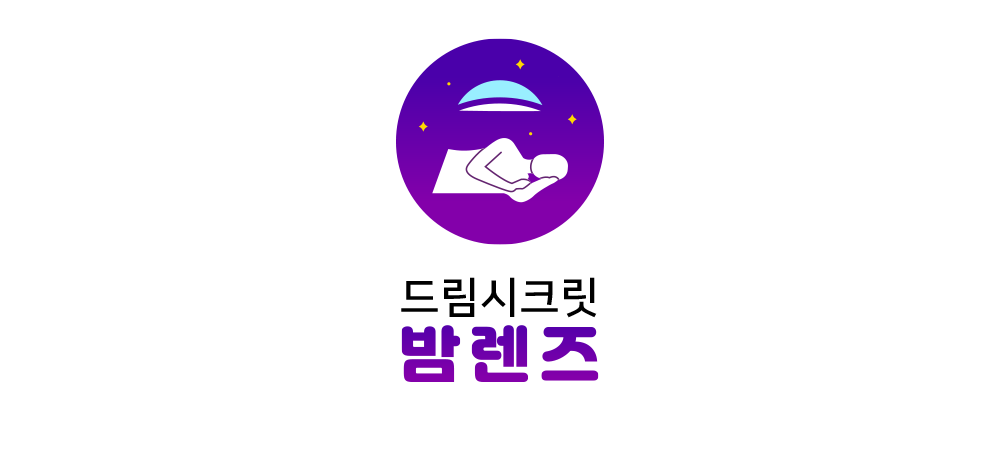
-
1 Examination is Different
-
Professional Examination for Night Lenses Dream Secret Specialized Tests
Because every individual differs not only in vision but also in corneal shape, corneal curvature, size, and corneal rigidity, Dream Lenses require accurate and multidimensional professional testing. Since Dream Lenses create intentional changes in corneal shape through pressure, precise diagnostic tests are essential to select the right lens and achieve the correction without burdening the eye. With these test results, we can select lenses that deliver the desired vision correction safely and effectively.

2 The Lens Selection Is Different
-
Lens Selection by Experienced Ophthalmologists and Optometrists
For safe night lens wear, evaluating overall eye health is crucial. Patients with keratoconus or corneal inflammation risk must undergo careful clinical evaluation. Additionally, excessive pressure from improper fitting can stress the cornea. Experts assess both current corneal condition and potential stress risks before determining the most appropriate design type, lens material, and model. Dream’s specialists leverage over 20 years of clinical experience and more than 40,000 vision correction cases to ensure optimal lens selection for every individual.
3 Lens Fitting for All 5 Zones
-
Expert Night Lens Fitting Matching All Corneal Zones Precisely
Once the appropriate lens is selected, it must be fitted to match the actual shape, size, and curvature of the cornea. If the fitting is inaccurate, night lenses will not function properly, resulting in poor correction. Since each lens brand and model has different designs for the 4 key zones, and since even among 30+ brands the curvature and size can vary, we meticulously find the model that fits the individual cornea best — ensuring precision down to the smallest detail. Rather than simply matching loosely, Dream ensures the lens sits exactly in the center of the cornea and remains stable to deliver accurate, consistent correction.
4 Over 300 Types of Night Lenses Available, Variety Brand.
-
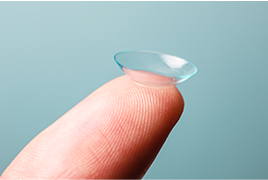
Dream Lens offers a wide range of brands and over 300 types of night lenses, each with precise differences in size, curvature, and design. Dream Lens ensures patients can find the most suitable lens for the eyes immediately, enhancing fitting precision and satisfaction.
5 In-Depth Lens Education
-
Dream Lens uses trial simulations to select the best suitable lens from variety brand.ㅍㅍ After selecting a lens, patients trial test it for 1–2 weeks at home to evaluate comfort and correction effectiveness before finalizing the choice, reducing post-purchase regret.

6 In-Depth Lens Education
-

The best suitable night lens use requires not only proper lens selection but also correct lens care. Dream provides full education on lens wearing, cleaning, storage, infection prevention, and corneal protection to ensure safe, effective vision correction.
7 Regular Follow-Up Care Secure Safety
-
Since night lenses press the cornea, regular eye exams are necessary to monitor for any stress or shape changes. Regular checkups allow to detect and issues early, ensuring safe and effective lens wear even after purchase.

8 Excellent Correction and Myopia Control Effect
-
A 2011 study published at IOVS showed that a group using Dream Lenses and hard lenses exhibited a significantly lower rate of myopia progression compared to a control group over a two-year observation period. A 2015 study published in PLOS One also reported that after two years, the group using Dream Lenses showed a 45% reduction in compared to the control group. Further research in 2018 confirmed that wearing Dream Lenses can help significantly slow or even stop the progression of myopia, making it a truly effective option for protecting your child’s vision.

9 Safe Transition to Vision Correction Surgery After Growth
-
Vision correction surgery like lasik and lasek is safest after eye growth stabilizes around ages 19~20. Wearing Dream Lenses can still safely have surgery later. As long as stop wearing Dream Lenses for a certain period and the corneal shape returns to normal, there’s no problem with having surgery afterward.
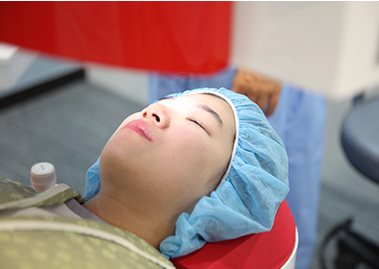
-









